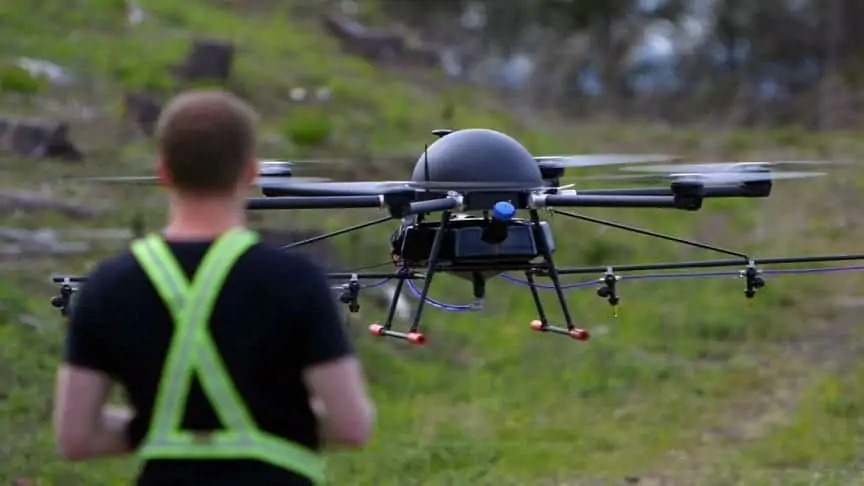
DroneSeed, a startup that uses drone swarms to deliver seed payloads to restore forests and rangelands after wildfires, has announced that the company has been awarded an additional amendment to its FAA Part 333 exemption that will enable it to operate its seed-planting drones Beyond Visual Line of Sight (BVLOS).
DroneSeed has previously earned the first and only approval by the FAA to operate heavy-lift drone swarms of up to five aircraft each carrying more than 57 lbs., which has allowed the company to secure contracts for post-fire restoration and forestry projects for The Nature Conservancy, Tribal entities and major timber companies. DroneSeed’s unmanned aircraft use “pucks” containing seeds, fertilizers and other amendments designed to boost seed survival, and this method of post-fire replanting can eliminate delays of 18-36 months waiting for seedlings to grow in a nursery.
The new ability to operate drones beyond a pilot’s view will provide access to areas that need post-fire replanting but lack a nearby road. The drone-based solution will also improve safety – scorched timber that is left onsite can fall over and kill workers performing manual replanting. Natural forest regeneration is also in decline due to climate change, with 40% of post-fire Northwest forests at risk of state-shift to grassy scrublands. DroneSeed can safely and efficiently replant seed vessels that boost survival rates immediately after a fire, deploying them with greater precision and efficacy by targeting areas called ‘microsites’ where regrowth has its best odds.
Grant Canary, Founder and CEO of DroneSeed, commented: “In an age where wildfires are both more severe, yet the new normal, and natural forest regeneration is declining rapidly, we need better tools such as drone swarms to have a shot at keeping the forests we have in addition to planting more trees to mitigate the worst effects of climate change.”


















